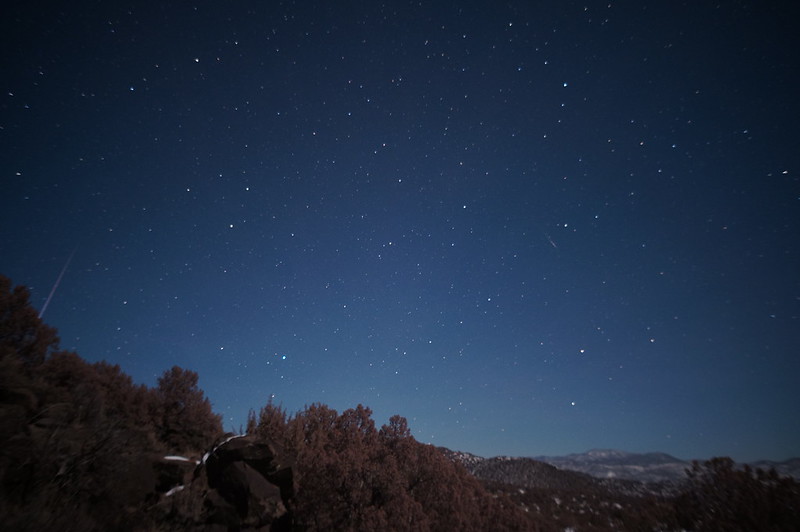
The Orionoid meteor shower, which NASA described as “one of the most beautiful showers,” is set to peak today.
The Orionoids, named after the Orion constellation, are celebrated by NASA for their brightness and speed. The meteors can travel at around 148,000 miles per hour, equivalent to forty-one miles per second. Due to their speed, some of the Orionoid meteors visible during the shower leave trails made of debris, which appear to the gazer as glowing dust.
According to NASA, the meteors are “framed by some of the brightest stars in the night sky,” creating a “spectacular backdrop” for those watching.
When does the meteor shower peak?
NASA said the shower started on September 26 and will continue through November 22. According to the space agency, the meteor shower will peak tonight (Saturday, October 21).
In clear skies, keen gazers will be able to see around 23 meteors per hour, with NASA saying that the best time to catch a glimpse is during the hours after midnight. This doesn’t quite match the intensity of the Quadrantid meteor shower, which can produce 100 meteors per hour.

Where will it be visible?
People in both the northern and southern hemispheres will be able to view the shower. According to NASA, the best view will be had by those who manage to get away from light sources. It will take roughly 30 minutes for viewers’ eyes to adapt before they will see the meteors, NASA said.
If viewing from the northern hemisphere, NASA suggests people lie on their backs with feet facing southeast. For watchers in the southern hemisphere, feet should be pointing northeast.
For the best view, NASA recommends finding the Betelgeuse star within the Orion constellation. Just to the north of this star is what’s known as the meteor shower’s ‘radiant’; the point from which the meteors seem to disperse. The space agency added that viewers should not fix their gaze on Orion, but look about 45 to 90 degrees away. this will apparently make the meteors “appear longer and more spectacular.”
NASA said the Orionoid meteor showers will last until dawn.
Why do meteor showers happen?
Meteors are composed of residual comet particles and sections of broken asteroids, according to NASA. The dust emitted by comets when they fly around the sun spreads into a trail around other orbits, and when our planet moves through these debris trails each year, the fragments collide with Earth’s atmosphere. This event causes the debris to disintegrate and produce the beautiful glowing dashes in the sky.
The bits of space debris that make up the Orionoid meteor shower is dust from Halley’s Comet, which takes 76 years to orbit the sun and was last observed in 1986.
See all the latest news from Greece and the world at Greekreporter.com. Contact our newsroom to report an update or send your story, photos and videos. Follow GR on Google News and subscribe here to our daily email!



